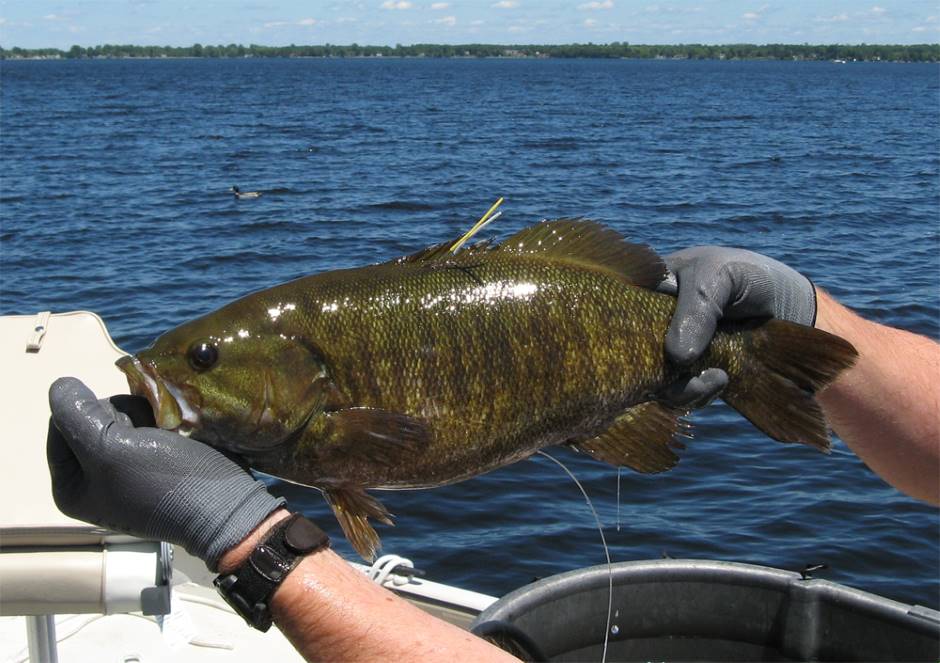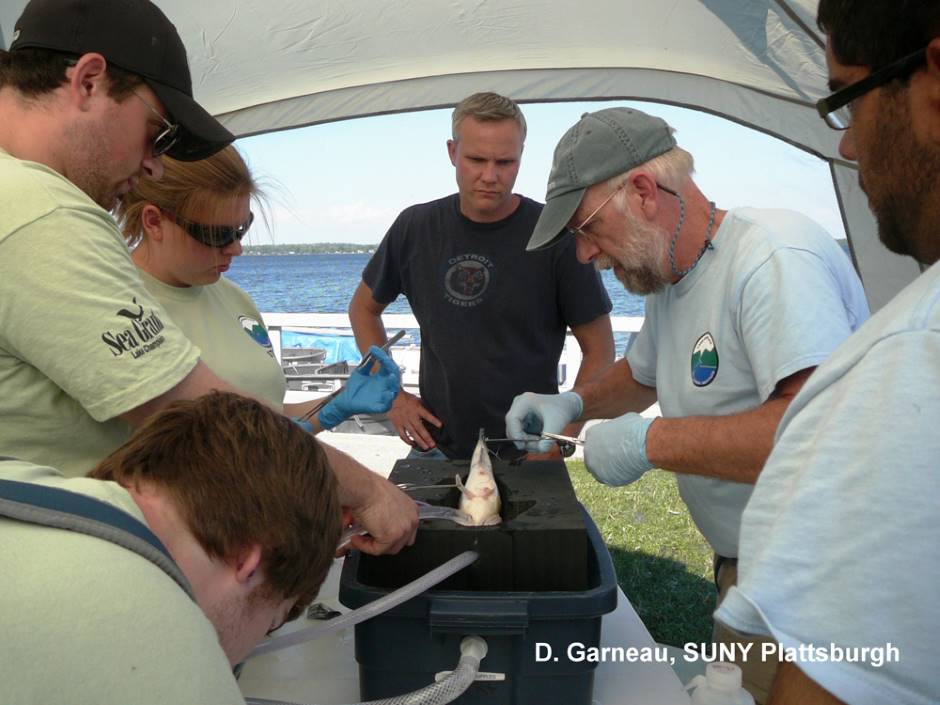How Fishing Tournaments Impact Fisheries
 A post-op tagged smallmouth (Credit: Lake Champlain Research Institute, SUNY Plattsburgh)
A post-op tagged smallmouth (Credit: Lake Champlain Research Institute, SUNY Plattsburgh)Fisheries throughout the U.S. host fishing tournaments, which can generate millions of dollars for the region. Money from the tournaments and the popularity of the events can spur fishing tourism and ultimately contribute to funds for state institutions. State Department of Resources or other managing bodies are supported by fishing licenses and other fees, allowing them to allocate more funds toward conservation efforts.
While it’s generally agreed that fishing tournaments are good for the economy, researchers and environmentalists have raised concerns over whether they are also good for fish and the ecosystem targeted by the events.
Fishing Tournaments and Fish
Broadly speaking, research from the Lake Champlain Sea Grant in 2013 found that fishing tournaments can stress fish out and take months to recover. While regulations and rules can limit the harm done, the way fishing tournaments operate alone can create issues.
The research focused on Lake Champlain specifically, but tournaments operate similarly in other parts of the country, indicating that the research could apply elsewhere as well. Lake Champlain was chosen due to its prized bass population and expansive tributaries, which also draw in anglers.
“There are probably 75 tournaments on this lake each year,” said Mark Malchoff, a former aquatic resources specialist with the Sea Grant. “And about four to six of them are big ones with sometimes 100 boats.”
Malchoff, along with investigators from the Lake Champlain Research Institute at the State University of New York-Plattsburgh, wanted to quantify the impacts of catch-and-release policies at the competitions and how bass disperse after being released back into the water.
To monitor bass behavior following the tournament, the fish were tagged with T-bars (tiny tags inserted between spines in dorsal fins), and a select number of fish were fitted with radio transmitters. Each of the T-bars had Malchoff’s phone number and email address on it so that the catch could be reported.
“You sort of release them and hope someone finds one, but there’s no guarantee,” said Malchoff. “It’s a classic letter in a bottle.”
Using each tagging method allows researchers to test the effectiveness of each strategy. At the same time, the two methods allow researchers to locate and track fish movement through the lake before and after the tournament.
According to the study, largemouth bass seemed to be particularly impacted during the tournaments. They experience more stress than smallmouths, as judged by a series of indicators, including bloody fins, hook wounds, or fin damage. A lot of the stress comes from being housed in livewells, which takes its toll. They may also be targeted more as the competition continues. Smallmouth bass also exhibited signs of stress. Like largemouth bass, smallmouths appeared more prone to bloody fins as water temperatures increased.
“With tournaments – the big ones at least – by day three, only the top 10 to 20 anglers are still fishing,” said Malchoff. “At that point, they’re targeting the biggest fish they can find.” And with live fish valued more at weigh-in time, fishermen try to keep fish swimming. “But the farther you move them (in livewells), the more likely it is they’ll get beat up,” said Malchoff.
After release, the tournaments also seemed to influence the disbursement of bass in Lake Champlain. A majority of released bass swam toward the north side. The northern part of the lake has plenty of high-quality habitat and saves the bass a trip over deep-water areas in the southern end, even if that is the area they spawned or were caught in.
Conclusion
While the research concluded that fishing tournaments can negatively impact fish, Malchoff proposes a few approaches that can help minimize the harm done to native species. “Don’t transport them as far (in livewells), and lake temperature — in a lot of places, waters are warmest in late July or early August — avoid scheduling tournaments at those times if at all possible,” said Malchoff.
Researchers also provided evidence against a commonly held notion that many types of fish stress could be attributed to barotrauma, or damage caused by sudden pressure changes. Fish that don’t maintain equilibrium don’t always need to have their air bladders deflated, Malchoff says, something that tournament anglers often do.
Ultimately, the goal of the research and major takeaway for anglers and managers is that current practices may not be the most sustainable. If steps aren’t taken to protect the native species, the tournaments and the stability of the population are at risk.
“My real interest is looking at tournaments as a sustainable resource,” said Malchoff. “And like a lot of things, there’s always room for improvement.”




0 comments